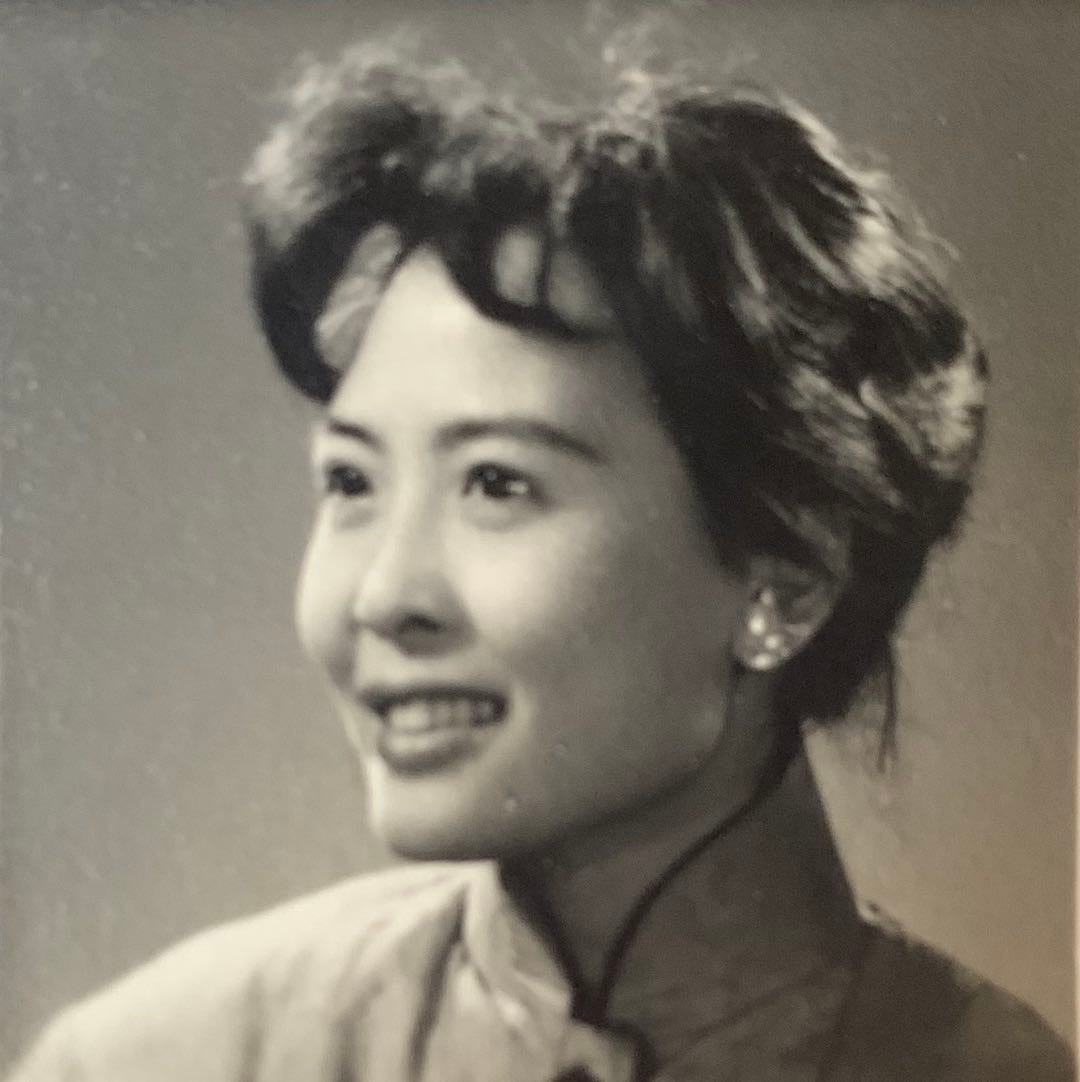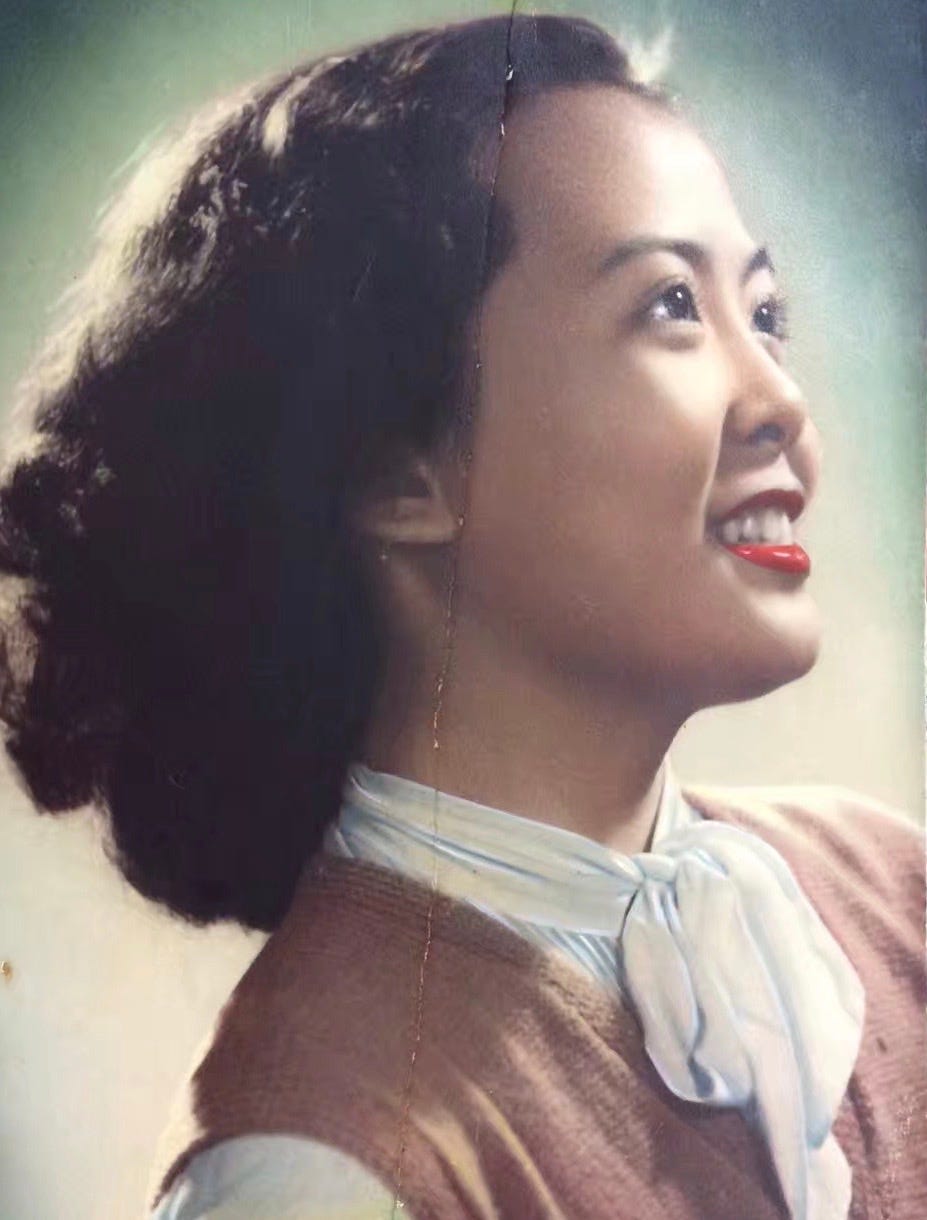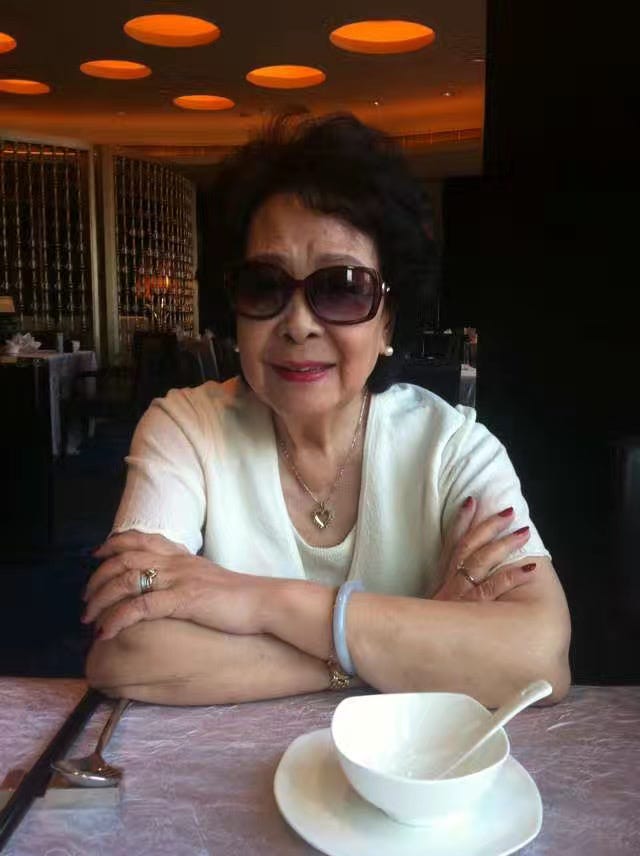The original version of this essay was first published on Jan 20, 2023, by Oldster Magazine; and here on IJR two months later, when I had fewer than 20 subscribers.
This is an edited version, for our new subscribers, and my Auntie-Mommy’s birthday.
Auntie-Mommy would have turned 89 last month, on her lunar birthday.
Birthdays were celebrated using the lunar calendar1 in Chinese tradition. However, younger generations prefer to use the Gregorian (solar) calendar, not only because official records and IDs use birthdays based on the Western system, but also because the corresponding lunar date changes on the Gregorian calendar from year to year. Few people remember their lunar birthdays now.
In my extended family, we always celebrated our birthdays using the lunar calendar because Auntie-Mommy always remembered everyone’s lunar birthday and was always the first to send birthday wishes.
When we lived in the same house in Shanghai, I’d always wake up to two perfectly poached eggs laying in fermented rice soup on the morning of my birthdays. Later, when we lived thousands of miles apart, on two continents, the poached eggs were replaced by early morning long-distance phone calls. Over the last decade, with the rising popularity of social network platforms, these early morning rituals transformed into digital messages sent via WeChat, the Chinese equivalent of Facebook. I’d often wake up to a string of WeChat messages in our family group, led by Auntie-Mommy’s birthday wish dotted with animated birthday cakes and her cheerful voice message: “Happy Birthday, sweetheart! Ask your hubby to cook you something nice!”
Our home in Shanghai was a French-style garden terrace house. My maternal grandparents, Grandpa A-Gong and Grandma A-Puo lived in the main master bedroom on the third floor with their youngest son; Mom and Dad took the second-floor rooms with my sister and me; Auntie, Mom’s younger sister, lived on the top (fourth) floor with her second husband. The multi-generation living arrangement was quite common in mid-20th century China.
Mom was the oldest of A-Gong and A-Puo’s six children (three lived in other cities with their families where they had their jobs). She received special treatments that were typically granted to a firstborn son—to be spared from domestic duties like kitchen chores and needlework. Auntie, on the other hand, was tasked to lead the domestic affairs. Together with A-Puo, she took care of my younger sister and me while Mom focused on her career as a college teacher and provided financial support for the family.
Auntie had two children from her first marriage, a marriage she entered hastily at the tender age of 17, after found out that she was pregnant. She was working as a nurse assistant at the time, and the father of her baby was a prominent doctor at the hospital. Back then, having children out of wedlock was considered scandalous by society, nor would it be accepted by her Christian parents. Auntie kneeled in front of the doctor and pleaded for a marriage. She gave birth to a daughter and son before she was twenty. Young and eager to escape her abusive marriage, Auntie was emotionally unavailable to be a loving mother, and lost custody of both of her children at the end of the divorce. She married her second husband shortly after. They were madly in love but not able to have any children of their own. My sister and I, together with other cousins, became the children they never had. Just like that, “Auntie” became “Auntie-Mommy”. It was a name we were all fond of, and a name she proudly used—in the third person—to refer to herself.
I grew up in China in the 1970s, at a time when everyday life resources were scarce. Dining out and shopping for ready-made clothes were luxuries reserved only for special occasions. Ziligensheng, or self-reliance, was a popular slogan promoted by the government and made popular by society—it might as well be the Chinese version of DIY (as in “do it yourself”). Auntie-Mommy was the exemplified DIY model in our household.
It was a time when staple food items like rice, pork, cooking oil, and eggs had to be rationed. Somehow, the limitations never prevented Auntie-Mommy from turning ordinary ingredients into delicious dishes that I’d swear were the best versions I have ever had. When it came time for the biggest holiday of the year, the Chinese New Year, we would receive extra rations of fish, poultry, and various dried produce from the neighborhood government (jiedao). All my uncles and aunts and cousins would travel across the country to gather in our garden terrace house for THE family feast of the year—"hot and noisy” was how we described our dinner scene.
Auntie Mommy held the most important role in that feast: the head chef and curator of the menu. To create eight cold dishes followed by eight hot dishes, with soup and dessert as the grand finale, was nothing short of a miracle. Her cooking always had the taste, aroma, and presentation that, had there been Instagrams or TikToks in those days, could make her an influencer with a huge following!
Preparing a banquet for 20 people with limited resources took lots of creativity, careful planning, and hard work. When the dinner event approached its finale, Auntie-Mommy could finally sit down at the table. Lighting a cigarette, she’d take a long drag, head tilted while blowing out the smoke. “I have been up since six this morning, and this is the first chance I get to sit down,” she’d say, narrowing her eyes behind the smoky veil, brows knitted. Even as a kid, I knew she was both happy and proud of her labor, and all it took to get a satisfactory smile out of her was to tell her that no one could have cooked anything tastier.
New Year's time also called for new clothes. I was a lanky kid who always seemed to be in growth spurts. I needed new clothes more often than once a year. Whenever I outgrew my clothes and needed new ones—sweaters, leggings, jackets, even winter thermo-shoes (yes, there were such things)—Auntie-Mommy was the family tailor.
Knitting always occupied her hands as she sat around the table chitchatting or watching Chinese dramas on a black-and-white 12-inch TV screen. Plain yarns transformed in her hands into scarves and sweaters with creative patterns while stories like those of The Dream of the Red Chamber2 unfolded on TV. In between meals, the dinner table became a workbench for Auntie-Mommy and A-Puo to make the cotton-wool winter thermo-shoes, with hand-stitched soles! As kids, my sister and I hated these bulky shoes because they made our feet look funny, and, “un-cool”. We were often teased, even bullied, at school for wearing such unfashionable footwear. Now, sitting in my office in front of a computer during the cold and wet Pacific Northwest long winters, I’d kill for a pair of such comfortable, warm, and funny-looking shoes! I miss that warmth and the love that was stitched into them.
Winters in Shanghai could be just as cold and wet as here in the Evergreen state. Back then, there were no home heating systems. Indoor temperatures could dip as low as outside. Auntie-Mommy would often use our afternoon nap time to lengthen an undershirt’s sleeves for my sister and me, using the cutouts from old clothes. When I think about those days, I can still close my eyes and feel the warmth provided by those sleeves that magically got extended to cover the base of my palms.
The Cultural Revolution took place between 1966 and 1976. During that time, traditions were referred to as “old things” (or the “four olds”): old customs, old culture, old habits, and old ideas. Old things were supposed to be torn down and cleansed out from our daily lives, and so was anything that represented individuality. We lived a uniform life in a sea of grey and blue; everyone wore the same efficient hairstyle—crew cut for men and ear-length straight short hair for women. But I learned from Auntie-Mommy that there existed a different life, where achromatic clothes could be beautiful, and short hair could be stylish.
Her room on the top floor was a small one with a vaulted ceiling. A dresser, double bed (which also served the function of chairs), and nightstand took the entire room. Whenever I climbed two sets of floors to visit her tiny room, the dresser was always the main attraction: glass perfume bottles with different shapes and colors lined against the mirror, and a ballerina figurine stood on top of a music box full of hair pins and combs twinkling with cubic zirconias. Tucked into the lower corner of the dresser mirror was a technicolored photo of a young Auntie-Mommy, beautiful as a movie star, confident and hopeful.
I would often linger in front of the dresser, running my skinny fingers over the shiny fake diamonds, and daydreamed about growing up to be pretty and graceful. To a young girl, Auntie-Mommy’s small room was like a fairyland.
I’d always have this image of Auntie-Mommy, sitting by the kitchen table, cigarette in her well-manicured hand, imparting her wisdom with nonchalance: “Honey, there are no ugly people, only lazy ones,” she’d say. When fashion was finally allowed to return to life in the 1980s, Auntie-Mommy’s nails would always be manicured in bright colors that matched her lip gloss; her hair permed and dyed, always looking like she had just stepped out of a salon. She kept up the nail and hair care ritual into her 80s.
She often talked about how loving someone more in a relationship always meant giving more, and how keeping some mystery about yourself could always serve you well. It’s hard to imagine I was amused by that at a young age, but thinking back, I can’t help but wonder if there was some timeless truth in her wisdom.
There are things, though, that I know are timeless—the memories of the New Year’s Eve dinners cooked by Auntie-Mommy and enjoyed by many, the memories of the warm clothes and birthday poached eggs, and the realization of how lucky I had been to have motherly love and care from more than one great woman.
Auntie-Mommy left us in October of 2020, after being diagnosed with stage IV lung cancer, one month before what would have been her 85th birthday.
I kept the WeChat session between Auntie-Mommy and me. For every birthday of mine, I’d go there and read the birthday wishes she sent with cake emojis. I also added a Chinese Calendar on my Apple settings and set a reminder for Auntie-Mommy’s lunar birthday. I want to be the first one, every year, to say Happy Birthday to my dear Auntie-Mommy!
Like what you read? Feel free to share this post.
The Chinese calendar, although sometimes called the “lunar calendar”, is in fact a lunisolar calendar that combines solar, lunar, and other cycles for various social and agricultural purposes (Wikipedia). Most Chinese refer to it as the “agriculture calendar” Nongli 农历.













Yi Xue, What a beautiful loving tribute to a beautiful loving 姨妈♥️♥️♥️ Full of carefully observed details of an amazing family. Thank you for republishing!
I loved reading this when it was published in Oldster, and I still love it today. Gorgeous, vivid and insightful, well done Yi!